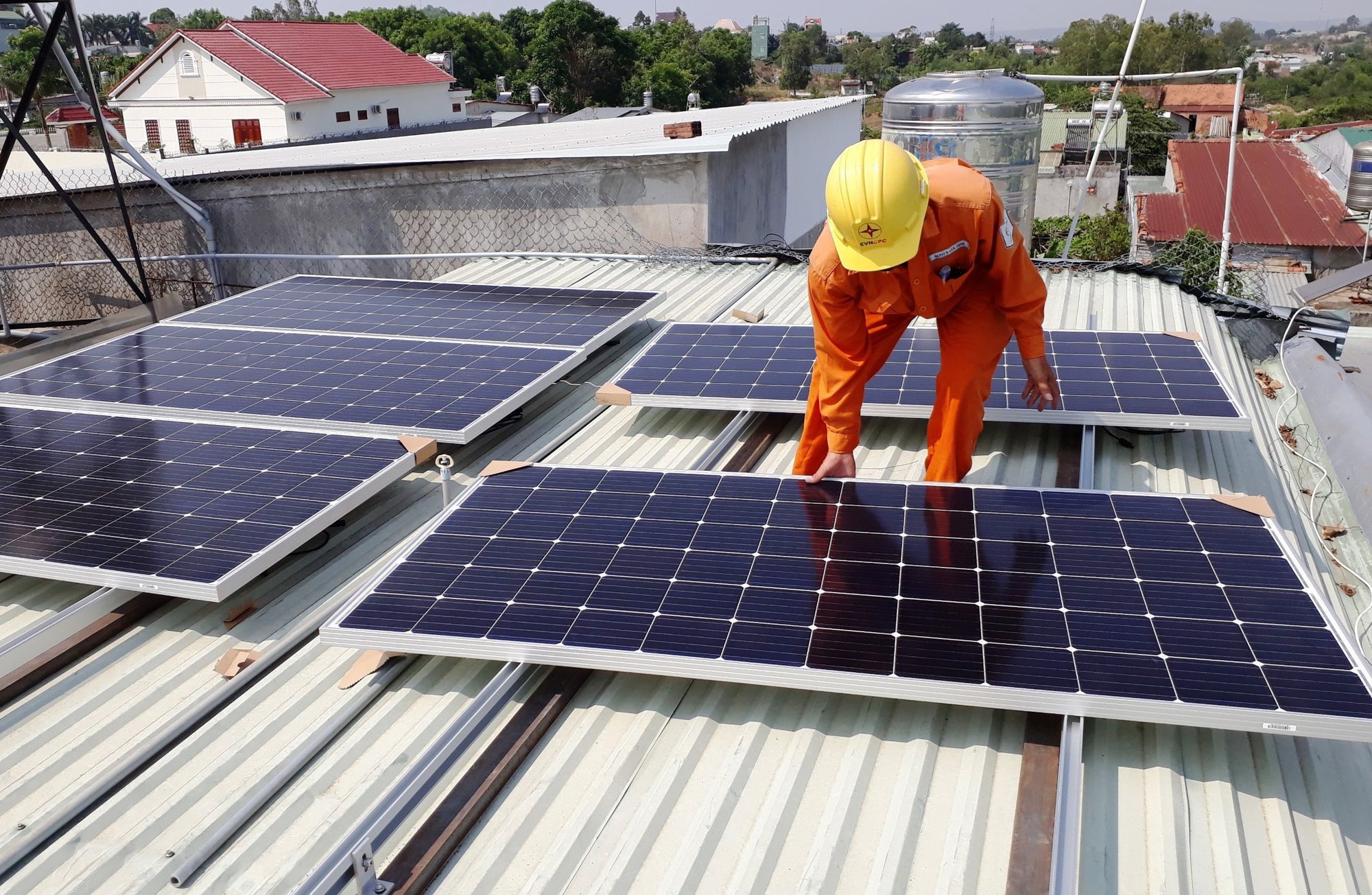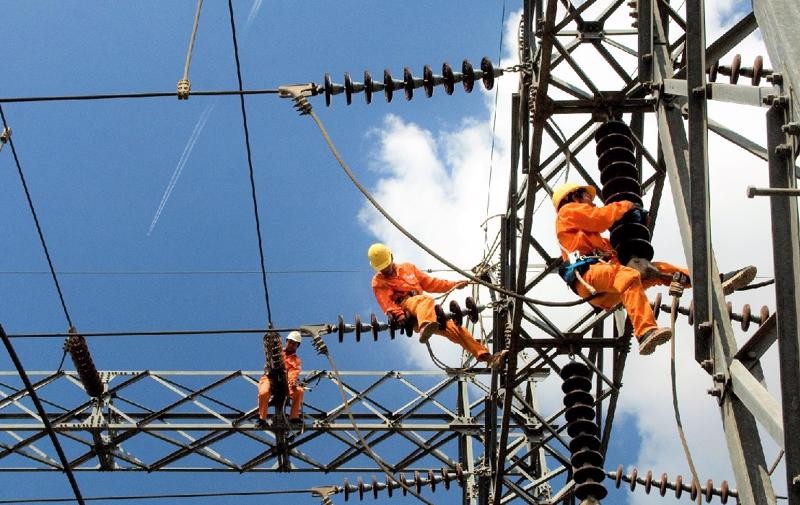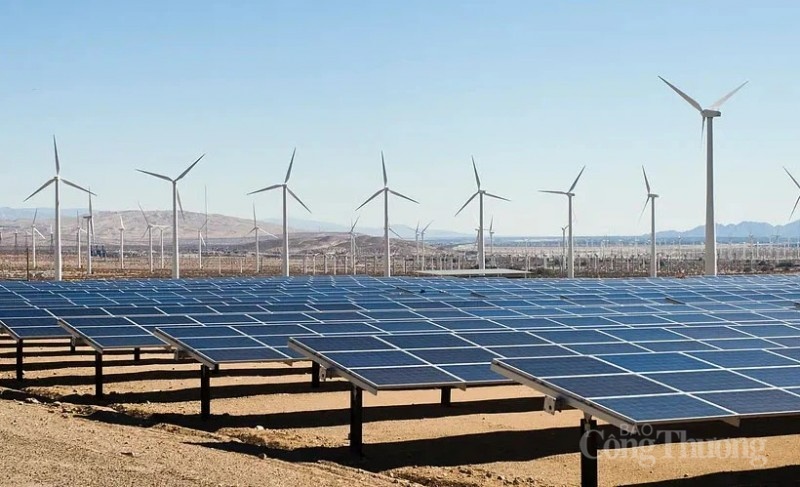Currently, the Ministry of Industry and Trade is seeking feedback on several draft mechanisms for developing the electricity sector, including the Draft Decree on incentive mechanisms for rooftop solar power, installed on the roofs of houses, offices, and industrial zones. Accordingly, the drafting agency has proposed that excess electricity generated to the grid be recorded at a price of 0 VND.
This proposal has also received some comments from production facilities, businesses, and people, suggesting that the excess electricity be allowed to be sold to the grid.

Regulations on the development of rooftop solar power installed at houses and offices in Vietnam for self-use, not for sale to other organizations or individuals (illustrative image)
However, according to the explanation of the drafting agency, because the development of rooftop solar power does not need to be adjusted by the Planning Law, and even more so is not subject to the strict criteria of the Electricity Law, if it is allowed to be transmitted to the national grid and then sold like the DPPA mechanism, it will lead to a state of policy opportunism.
In the context of the current conditions of the transmission and distribution system, balancing the structure of sources, the solution to prevent reverse flow, and the solution to purchase at a price of 0 VND (in the case of transmission to the national grid) are appropriate, and will prevent the phenomenon of policy opportunism. In addition, the incentive mechanisms for the type of rooftop solar power for self-production and self-consumption are a breakthrough in the effort to remove legal barriers to the development of electricity sources in the context that some specialized legal regulations have not kept pace with reality.
While many businesses want to be connected to the grid to sell excess electricity or to use grid electricity when there is a shortage, it is clear that from the perspective of the management agency, ensuring the security and safety of the national power system must be the top priority. Because the grid system is invested by the State through EVN, while renewable energy sources (wind power, solar power) depend heavily on weather factors.
Although the Vietnamese electricity industry has invested heavily in and rapidly innovated technology over the past few years, and is rated as one of the top in ASEAN countries, this does not mean that we can fully meet all electricity sources with different capacity levels, because to do that, there must be storage technology, technology for operating and controlling the grid system, and baseload power sources that can generate electricity when wind and solar power decline.

Vietnam’s power grid system is increasingly invested in and modernized (illustrative image: Dinh Dung)
Not to mention, we do not yet have storage technology, and even if we did, the cost of selling electricity would not be cheap. This will directly affect EVN’s customers and buyers, as this company has to perform both production and business tasks, but also has to perform the main political task of investing to ensure electricity supply to remote areas, border areas, and islands. In addition, electricity prices must be appropriate to people’s income and living conditions, as well as the competitiveness of businesses.
Therefore, the policy does not encourage excess production to be fed into the grid, otherwise the control system will encounter many difficulties and risk “grid breakdown” if solar power suddenly drops in capacity while baseload power does not have time to supplement it.
Even if it is allowed to be connected to the grid, EVN’s grid operation will face many difficulties and there is a high risk of high voltage grid insecurity. If only a few households are affected, it is not a problem, but in the case of tens of thousands to hundreds of thousands of households or more with excess electricity being generated and fed into the grid, the risk of insecurity of the power system is real.
Therefore, the policy only encourages enough installation for use and allows connection to the grid (at a price of 0 VND) to help households ensure the safety of electrical equipment in the home. This policy also aims to encourage households to invest in storage batteries.
Currently, Vietnam’s grid infrastructure is still limited and cannot be compared to that of developed countries such as the US, Australia, and the EU. However, compared to countries in the region and developing countries, Vietnam’s grid infrastructure has been improved and is being modernized. This is evident from the fact that the proportion of renewable energy (wind power, solar power, biomass) in Vietnam has recently reached 27% of the total system capacity.
The draft decree is proposed because the nature of solar power is unstable. Whether or not solar power is purchased, EVN must still ensure the supply of electricity. When there is no sun, the company must mobilize one or two other thermal power plants to compensate. Due to the instability of renewable energy and specifically solar power, baseload power (thermal power, gas power, hydropower) cannot be turned off and on continuously because it can cause waste of fuel for starting up, damage to equipment, etc. Therefore, the policy is not “keen” on buying solar power. Only when Vietnam has a nuclear power plant that can easily change its baseload capacity will EVN be confident in buying solar power.
In addition, solar power depends on the weather, so it is not known how much electricity will be generated to the grid in order to balance with thermal power to ensure safety in transmission and stability of the source for production.

Renewable energy depends on the weather
If the renewable energy source suddenly drops and there is no immediate additional baseload power supply, the grid system will “collapse” while it takes an average of 3-4 hours for thermal power to supplement and adjust its capacity. In the meantime, the power system must always ensure the balance between supply and demand of electricity; when the balance is lost, it will cause voltage surges that damage and shorten the life of electrical equipment and even cause fires, explosions, and grid failures. At that time, the economic loss and repair costs will be higher than the money saved on coal, and each household will have to invest in storage themselves.
Thermal power plants, even if they do not generate electricity to the grid, always have to keep the boiler running, even in standby mode, because if they stop operating, it will take a long time and cost to restart to generate electricity for a unit.
During the time when the furnace is still operating but cannot generate electricity to the grid, it means that fuel is still being consumed and EVN has to pay for it when purchasing.
Therefore, all regulations or draft policies must be developed based on specific reality and conditions.







































